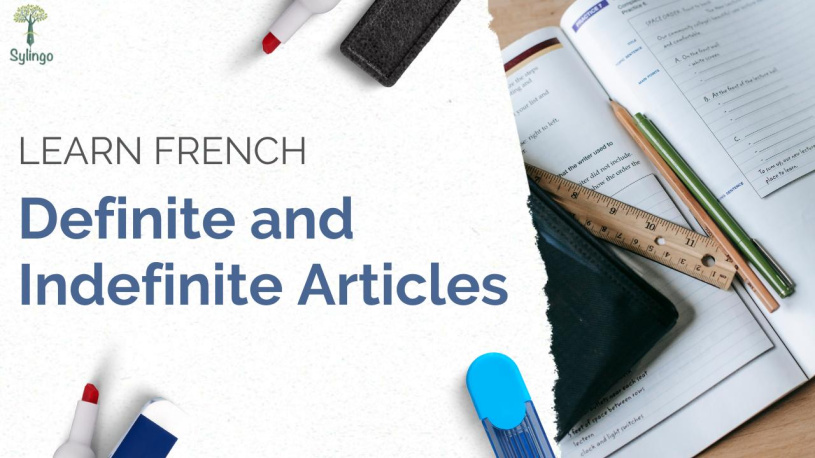In French, articles are used to indicate the gender and number of nouns. Definite articles refer to specific nouns, while indefinite articles refer to non-specific nouns. Understanding the usage of definite and indefinite articles is essential for mastering French grammar.
1. Definite Articles:
Definite articles refer to specific nouns and are used to indicate that the noun is known or specified.
- Masculine singular: Le (the)
- Feminine singular: La (the)
- Masculine and feminine plural: Les (the)
Example:
- Le garçon (the boy)
- La fille (the girl)
- Les enfants (the children)
2. Indefinite Articles:
Indefinite articles refer to non-specific nouns and are used to indicate that the noun is not known or specified.
- Masculine singular: Un (a/an)
- Feminine singular: Une (a/an)
- Masculine and feminine plural: Des (some)
Example:
- Un livre (a book)
- Une chaise (a chair)
- Des pommes (some apples)
3. Usage of Articles:
Definite articles: Used when referring to specific nouns known to the speaker and listener.
Indefinite articles: Used when referring to non-specific nouns or introducing new information.
4. Agreement with Nouns:
Articles must agree in gender and number with the nouns they modify.
Definite articles (le, la, les) and indefinite articles (un, une, des) agree with the gender and number of the noun they precede.
5. Practice Sentences:
Definite Articles:
-
Je lis le livre. (I am reading the book.)
-
Elle regarde la télévision. (She is watching the television.)
-
Les étudiants étudient les leçons. (The students are studying the lessons.)
Indefinite Articles:
-
J'ai un chat. (I have a cat.)
-
Il achète une voiture. (He is buying a car.)
-
Des enfants jouent dans le parc. (Some children are playing in the park.)
Exercise:
Fill in the blanks with the appropriate definite (le, la, les) or indefinite (un, une, des) article:
-
Je vais acheter __________ voiture. (I'm going to buy a car.)
-
____ fille porte une robe rouge. (The girl is wearing a red dress.)
-
J'ai vu __________ film hier soir. (I watched a movie last night.)
-
____ homme marche rapidement dans la rue. (The man is walking quickly in the street.)
-
Nous avons mangé __________ gâteau délicieux. (We ate a delicious cake.)
-
Elle aime lire __________ livres. (She likes to read books.)
-
Il a visité __________ musée célèbre. (He visited a famous museum.)
-
_____ voiture est garée devant la maison. (The car is parked in front of the house.r)
-
_____ chien aboie dans le jardin. (The dog is barking in the garden.)
-
_____ enfants jouent dans ____ parc. (The children are playing in the park.)
Answers:
-
Je vais acheter une voiture.
-
La fille porte une robe rouge.
-
J'ai vu un film hier soir.
-
L' homme marche rapidement dans la rue.
-
Nous avons mangé un gâteau délicieux.
-
Elle aime lire des livres.
-
Il a visité un musée célèbre.
-
La voiture est garée devant la maison.
-
Le chien aboie dans le jardin.
-
Les enfants jouent dans le parc.
Understanding the usage of definite and indefinite articles is fundamental in French grammar. Definite articles specify known nouns, while indefinite articles refer to non-specific nouns. Articles must agree in gender and number with the nouns they modify, making their correct usage essential for clear communication in French.





